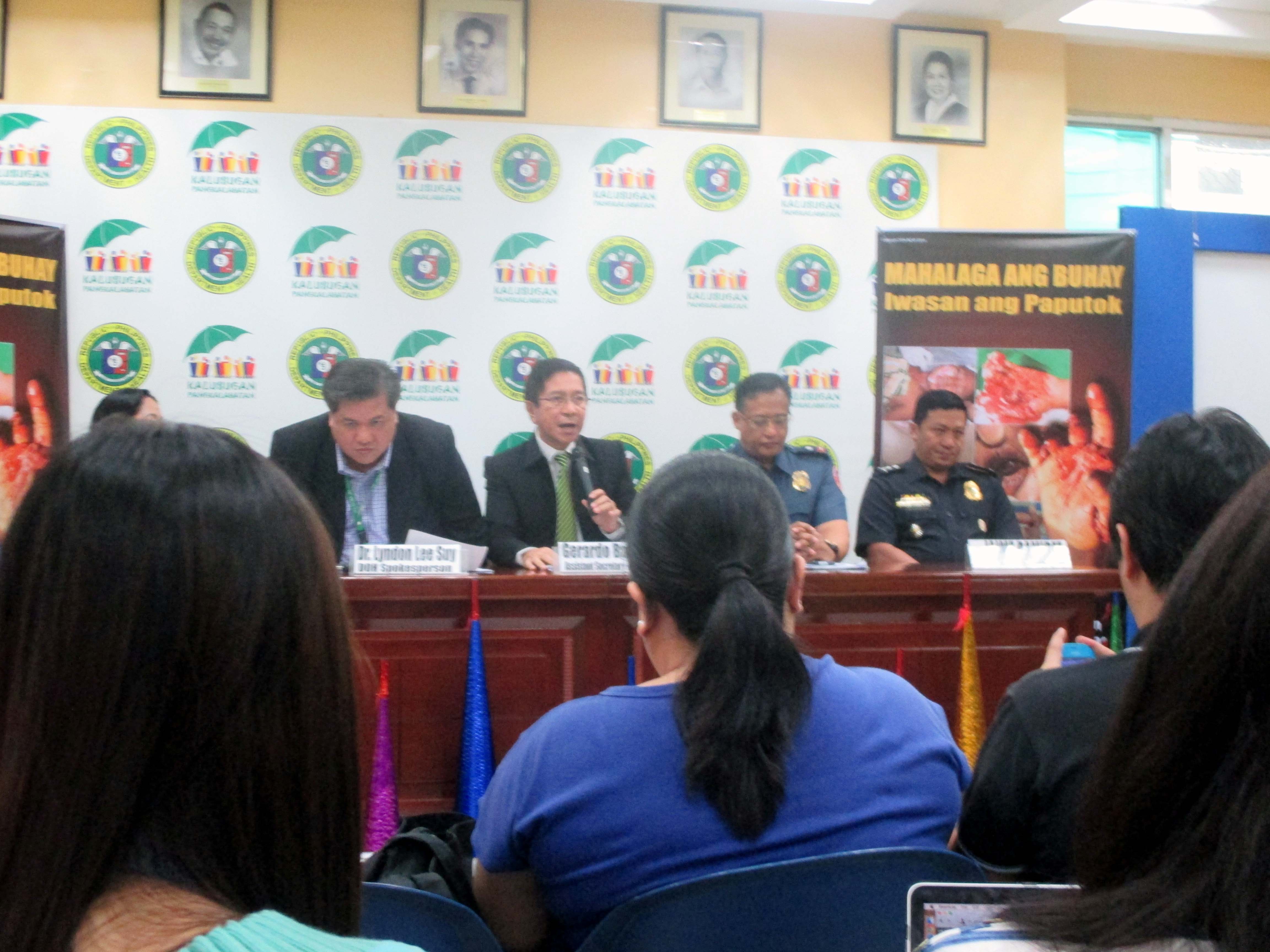Health
DOH highlights importance of life at the launching of its 2014 Anti-Firecracker Campaign
MANILA — With the Christmas and New Year celebrations fast approaching, the Department of Health (DOH) highlighted the importance of life during the launching on Thursday of its 2014 Anti-Firecracker Campaign with the theme, “Mahalaga ang Buhay, Iwasan ang Paputok.”
In a press briefing held at the DOH’s Media Relations Unit in Tayuman, Sta. Cruz, Manila, DOH spokesperson Lyndon Lee-Suy cited the need for the people to refrain from celebrating the coming holidays with the use of firecrackers which not only cause injuries but also deaths.
Dr. Lee-Suy said the people must learn continuously that there are many happier ways to celebrate the holidays safely and without getting injuries due to dangerous firecrackers.
He emphasized that firecracker injuries sometimes become so severe, like losing hands, forearms, legs and even eye damages that can have direct effect on the future of the victims, especially children.
“There are other means to celebrate than exploding firecrackers and lighting fireworks.
Life is important. It is not worth risking losing lives and limbs,” DOH Acting Secretary Janette L. Garin said in a statement read by Assistant Secretary Gerardo Bayugo during the briefing.
Bayugo cited alternative noise-making devices that can be used in welcoming Christmas and New Year holidays such as blowing of “torotot” (party horns), honking of car horns, playing loud music, parlor games, concerts and even neighborhood street parties.
Based on DOH data, the celebration of holidays in 2013 recorded injuries 9.0 percent higher than in 2012.
By regions, topping the number of cases was the National Capital Region (NCR) with 587 injuries, followed by CALABARZON (Cavite, Laguna, Batangas, Rizal and Quezon) with 80; Western Visayas, 73; and Ilocos Region, 65.
In the NCR, Manila and Quezon City registered the most number of injuries.
From the 1,018 injuries recorded in 2013, majority of the injuries or a total of 997 cases were attributed to firecrackers.
At least 25 victims sustained blast wounds that required amputation while 147 others had eye injuries.
Nineteen persons were wounded due to stray bullets as a result of indiscriminate firing of guns. There were also two cases of firecracker ingestion.
By type of fireworks, piccolo caused the most number of injuries (38 percent), followed by “kwitis” (11 percent); five-star (5.0 percent); and pla-pla (4.0 percent).
In the same press briefing, representatives of other partners of DOH in the anti-firecracker campaign, like the Eco-Waste Coalition, the Philippine National Police (PNP)-National Capital Region Police Office (NCRPO) and Bureau of Fire Protection (BFP) also urged the parents to guard their children from using or buying firecrackers.
NCRPO Chief Insp. Carlo Manuel warned about the penalty for manufacture and distribution of illegal firecrackers as stipulated in Republic Act No. 7183 or the law that regulates the sale, manufacture, distribution and use of firecrackers.
Eco-Waste Coalition representative Aileen Lucero, on the other hand, noted that aside from deaths and injuries, firecrackers also cause harmful effects to the environment.
The BFP said there had been fire incidents attributed to sky-lantern and baby rocket firecrackers in past Christmas and New Year’s celebrations.






















